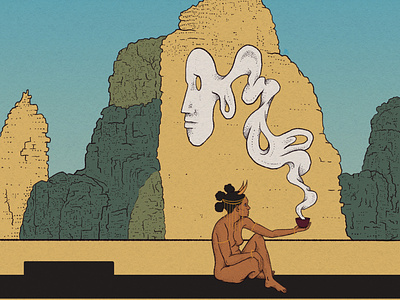The Prophet
Semiotic deep-dive: The Prophet
In monotheistic religions such as Judaism, Christianity, and Islam, prophets are considered to be messengers of God who bring teachings and guidance to the people. These prophets are often considered to have a special role in interpreting the will of God and in helping to shape the religious beliefs and practices of the community. Often seen as a spiritual advisor, healer, and an intermediary between the human and the divine. Prophets in ancient societies were also believed to have the ability to predict the future or interpret signs and omens.
In addition to their religious and spiritual roles, prophets have often been seen as social and political figures, speaking out against injustice and oppression and advocating for social change.
The smoke forming into a face represents a divine messenger, bridging the gap between the physical and spiritual realms. The woman is depicted in a contemplative stance, suggesting deep thought and spiritual contemplation. She is holding the bowl of incense symbolizes the role of the prophet as an intermediary between the divine and humanity. Holding the incense could be interpreted as an offering or a way to connect to the divine realm.
This artwork explores themes of spiritual contemplation, purification, and the role of the prophet as a messenger of the divine. The symbol of a prophet is also associated with the light, the light of truth, wisdom, and guidance. A prophet is often depicted as a guide who helps people navigate the complexities of life, and the prophet's message has been seen as a source of hope and inspiration for the people.









